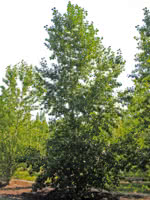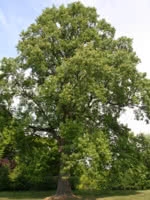Mon-Fri 9am - 5pm Mountain time
Tristis Poplar vs Tulip Poplar
Populus x Tristis
Liriodendron tulipifera
NOT AVAILABLE THIS SEASON - MIGHT RETURN
NOT AVAILABLE THIS SEASON - MIGHT RETURN
Tristis Poplar is a large deciduous tree. It is cold hardy, disease resistant, and relatively drought tolerant. Tristis Poplar loses its leaves later in the year than other Poplars, making it a great ornamental tree in fall.
It's known for its strongly scented balsamic buds and yellow foliage in autumn. Because of its size, Tristis Poplar is most suitable for large properties and will help prevent wind erosion.
Tristis Poplar is slower-growing than many newer hybrids, for a longer useful lifespan. Tristis grows especially well in the southern prairies due to its resistance to cold dry winds.
Tulip Poplar is the perfect shade tree for wide open spaces. It has a shallow and extensive root system, so ensure you give it space to grow. The attractive and showy, yellow-orange, tulip shaped flowers are where this tree gets its name.
Tulip Poplar is somewhat rare in Canada but highly sought after as it is difficult to grow. Does best in a moist, well-drained soil.
Tristis Poplar Quick Facts
Tulip Poplar Quick Facts
In row spacing: 2.4 m (8 ft)

